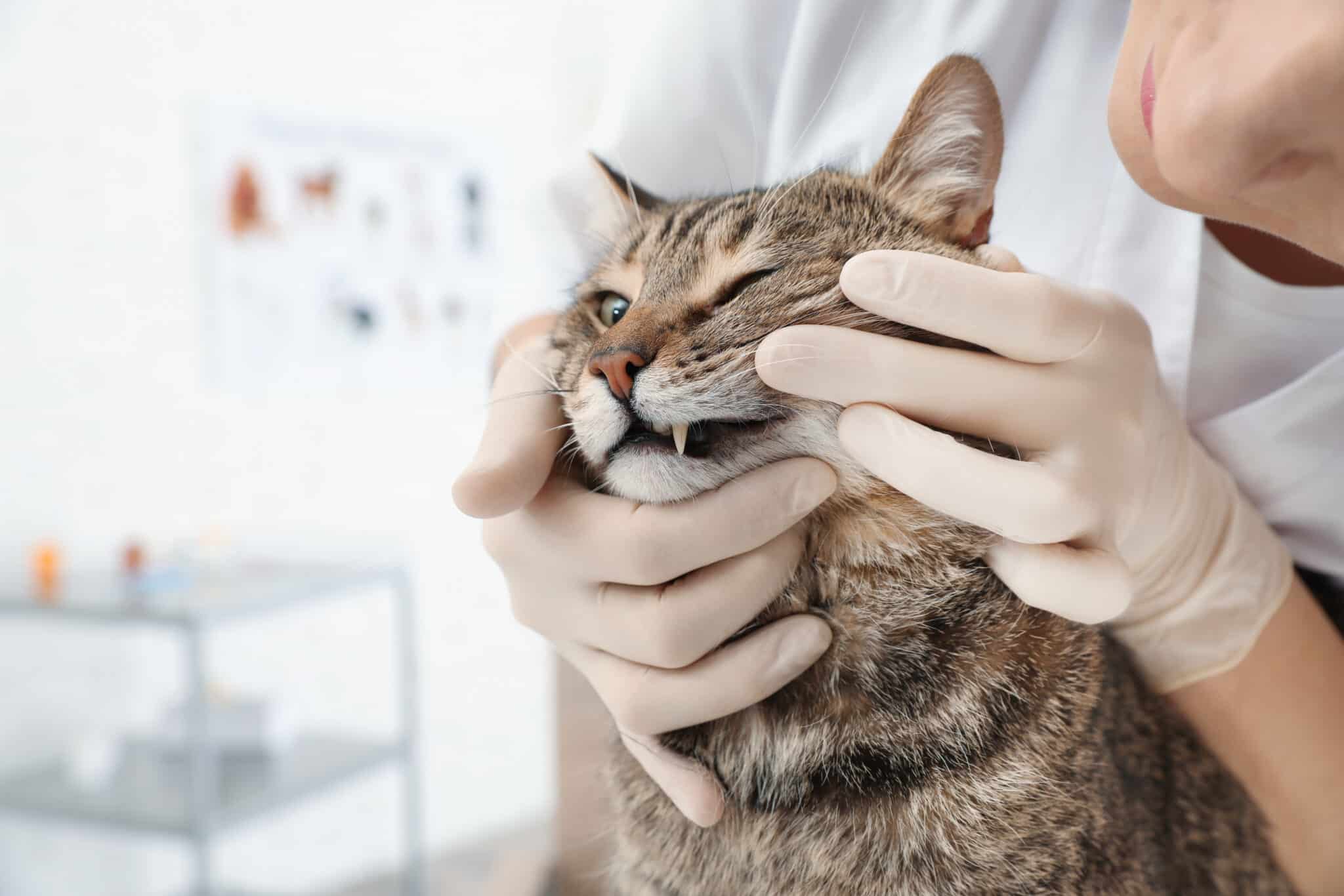Top 7 Wellness Plans from Pet Insurance Companies
We at the Marketwatch Guides team evaluated wellness plans offered by top pet insurance providers and veterinary hospitals. Here are our plan picks:
- Lemonade: Our top pick
- Spot: Best for customizable coverage
- ASPCA Pet Health Insurance: Best for senior pets
- Embrace Pet Insurance: Best for multiple pets
- ManyPets: Best for direct deposit reimbursement
- AKC Pet Insurance: Best customer experience
- Wagmo: Best for quick claim reimbursement
Compare Top Pet Insurance Wellness Plans
According to our analysis of how much it costs to own a pet, the average base price for wellness care is $448 annually. Use the table below to compare our top picks based on available wellness coverage, cost and expected savings.
*We estimated annual costs based on average pricing to insure dogs and cats. Your price will vary depending on your pet, location and chosen plan.
What Does a Pet Insurance Wellness Plan Cover?
Instead of focusing on accidents and illnesses, as with traditional pet insurance, wellness plans provide reimbursement for routine preventive care services up to a specified maximum. Most providers cover a fixed amount per service each year, which means you will not receive reimbursement for services you do not use, but a few providers allow for more flexibility. Common services covered by wellness plans include vaccinations, wellness visits, parasite control, diagnostic screening tests and dental cleanings.
Basic Pet Wellness Coverage:
The difference between a basic wellness plan and an upgraded or comprehensive plan depends on the specific provider. Generally speaking, basic wellness plans cover the following limited services:
- Wellness visits
- Vaccines
- Fecal test
- Heartworm or FIV or FeLV test
- Deworming
Comprehensive Wellness Plans:
Comprehensive and upgraded wellness plans may provide higher reimbursements than basic coverage, including services such as:
- Microchipping
- Health certificates
- Spay or neuter surgery
- Dental cleanings
- Flea, tick and heartworm prevention
- Wellness blood and urine profiles
- Grooming
- Supplements
- Alternative wellness care
The Best Wellness Plans in Detail
What is a Pet Wellness Plan?
A pet wellness plan covers routine veterinary visits and other routine health care such as annual vet checkups, lab work, blood work, vaccines, dental care, physical exams and more. These routine treatments and checkups are essential to maintaining your pet’s health. A pet wellness plan often only covers preventive care and does not include accident and illness coverage.
In short, pet wellness plans cover the routine services that help ensure your pet has a long and healthy life. Many of these services are part of the regular care that Dr. Katie Krebs, an assistant professor in clinical primary care at the University of Pennsylvania’s Ryan Veterinary Hospital, describes as critical aspects of preventative care.
In most cases, wellness plans are add-ons for pet insurance and not available as stand-alone coverage. Wellness plans usually include a monthly fee, or premium, in exchange for reimbursement for preventative vet visits up to a specific annual allowance. However, some providers may use a similar copay method to pet insurance.
Wellness Plans for Dogs
Puppy wellness plans typically cover exams, microchipping, spaying/neutering, vaccines such as DHLPP and various other preventative care treatments. According to Dr. Angela Beal, DVM, the annual cost of routine care for a puppy could reach as high as $1,890. Dog wellness plans help cover these costs, alleviating the need for out-of-pocket payments.
Wellness Plans for Cats
Cat wellness plans cover similar preventative care measures as dog wellness plans, with the difference that companies typically include coverage for cat-specific vaccines. These may encompass vaccines for the feline panleukopenia virus, feline viral rhinotracheitis and feline leukemia virus (FeLV).
What's the Difference Between Pet Insurance and Pet Wellness Plans?
Pet insurance can provide financial coverage for unexpected pet accidents and illnesses, reimbursing a set percentage of your pet’s total bill after a deductible is applied. In contrast, pet wellness plans can help cover costs associated with planned routine care. Typically, you can purchase wellness plans as standalone service bundles from veterinary hospitals or as add-ons to traditional insurance policies. In most cases, wellness plan service reimbursements are not subject to a deductible or copayment.
Dr. Sarah Proctor, DVM, MPH, a clinical associate professor at the University of New Hampshire Thompson School of Applied Science Agriculture, Nutrition and Food Systems, notes the value of pet insurance:
“Pet insurance is a great idea so you don’t have to make decisions about your pet’s care due to budget limitations. It doesn’t take long to rack up several thousand dollars in bills from a single emergency visit.”
The Venn diagram graphic below illustrates the differences between pet insurance and pet wellness plans.
Watch the video below to learn more in-depth differences between pet insurance plans and preventative care plans by Heart and Paw.
What’s Not Covered by Pet Insurance Wellness Plans?
Wellness plans do not cover emergency vet care, which includes treatments related to the following:
- Accidents
- Injuries
- Diseases
- Pre-existing conditions
- Pregnancies and breeding
- Other conditions are not considered preventative care
However, you can obtain coverage for accidents and illnesses, or just accidents, by purchasing a standard pet insurance policy.
How Much Do Pet Wellness Plans Cost?
The cost of pet wellness care will depend on the provider and the amount of coverage included. Pet owners cannot buy just a pet wellness plan; they must also buy an accident-and-illness or accident-only insurance plan.
The cost of a pet wellness plan add-on is typically under $20 per month, ranging from $10 to $19 for our top recommended companies, based on quotes we gathered. The cost of a basic pet insurance policy and a preventive care package ranges from around $41 to $67.
Most pet insurance companies offer the same pet wellness plan option for all breeds. The table below has a breakdown of pet wellness plan costs and the overall cost of pet insurance and preventative care.
Many pet insurance companies offer two tiers of wellness coverage: a basic tier that typically ranges from $10 to $22 per month and a more comprehensive package that averages $20 to $35 per month. Which plan option you choose will depend on your exact preventative care needs.
Wellness plans are only as valuable as the services you use each year. You can purchase the lowest plan tier that covers the services your pet routinely requires to try to save on costs. While overpaying for an upgraded plan with more benefits may seem like a good investment, you could lose money on services your pet does not need.
What You Save With a Wellness Plan
Wellness plans can provide savings for pet owners, but the exact amount varies considerably depending on the provider and plan structure. To achieve maximum savings from a wellness plan, you must use your pet’s entire benefit amount each year. Think of each service on your benefit list as pre-paid — if you fail to use those services, you’ve effectively lost money.
For example, if your wellness plan costs $120 annually and provides $250 in reimbursements each year, you could potentially save up to $130. But if that $250 includes $40 for a microchip your pet already has and $20 for a health certificate you do not use, your savings drops to only $70 for the year.
We asked Angela Beal, DVM, for the average cost of common wellness treatments based on her 20 years as a licensed veterinarian. Here’s what she said:
| Coverage Item | Average Cost* |
|---|---|
| Annual exam | $50–$80 |
| Vaccines | $20–$60 each (up to six required each year, depending on the pet) |
| Dental cleaning | $300–$500 |
| Spay or neuter | $200–$600 |
| Heartworm test | $35–$75 |
| Blood and urine tests | $80–$200 |
| Fecal test | $35–$75 |
*The average cost is based on our conversation with Dr. Beal and may vary depending on your location, veterinary technician and pet.
Do Pet Wellness Plans Have Waiting Periods?
Every pet insurance company has waiting periods before coverage begins, which also applies to wellness plans. Pet insurance that covers routine care also has an average waiting period of one to two weeks. Be sure to enroll in a pet insurance plan with an additional wellness plan before starting routine care to receive coverage.
Do Pet Wellness Plans Cover Pre-Existing Conditions?
No, pet wellness plans don’t cover preexisting or chronic conditions. Unfortunately, no pet insurer currently covers pre-existing conditions. Insurance companies see pets with these medical conditions as costly and high-risk investments, especially since they’re guaranteed to need veterinary care in the foreseeable future.
However, some companies will distinguish between curable and incurable conditions, opting to cover curable conditions with specific stipulations. In addition, some routine treatments covered in wellness plans may help cure these conditions.
Some pre-existing conditions are more common among certain species and breeds than others. Dr. Rodney Steven Bagley, DVM, Diplomate ACVIM, a professor at Iowa State University College of Veterinary Medicine, suggests doing some research on your pet to learn what conditions it is particularly at risk for.
“All breeds can potentially have specific diseases, and equally, there are myriad diseases that are not breed-associate or dependent,” said Dr. Bagley. “You can check online databases or other sources about diseases your dog breed may have. Use keywords such as ‘disease’ and the breed of dog you have in your search. Importantly, just because you find information about a disease in the breed you have doesn’t mean your dog will actually get that disease.”
Pet Wellness Plans Near Me
Looking for local pet insurance or hospitals with routine care coverage plans? Select your state from the list below to get a full list of our top-recommended pet insurance companies near you.
Is a Pet Wellness Plan Worth It?
A pet wellness plan can be worth it, especially if you have a young puppy or kitten because you will often get more use of your preventative pet insurance if you start your pet young. Though routine pet care costs less than surgeries or cancer treatments, you’ll ultimately spend more on preventive care throughout your pet’s lifetime if you don’t have a wellness plan.
According to health care financing company Care Credit, vet exams, core vaccinations, and procedures such as spaying or neutering and microchip implantations can total $2,800 in a puppy’s first year. The first-year cost for a cat is nearly $2,500.
If you paid $55 per month for a pet insurance plan with wellness care, you'd pay $660 over the course of a year for coverage rather than $2,800. That's $2,140 in savings!
While wellness plans and pet insurance may not suit every pet and pet owner, experts such as Dr. Amy Nichelason, DVM, DABVP, a clinical assistant professor at the University of Wisconsin-Madison School of Veterinary Medicine, still suggest looking into coverage options.
“Pet insurance can help when planning for unexpected medical emergencies and the associated financial burden,” said Dr. Nichelason. “I always caution owners to look into each pet insurer to ensure it is meeting the needs they desire. For instance, looking to see if a plan covers pre-existing, breed-related or genetic issues may be important depending on the type of pet you have. Additionally, do you want just accident coverage or wellness or illness protection?”
Without a wellness plan, pet owners should plan to spend $7,600 to $19,000 in veterinary care over their cat or dog’s lifetime. An add-on wellness plan can help to offset the cost of annual preventive healthcare for your dog or cat through a low monthly fee added to your pet insurance premium. While it will not cover all expenses, it will help spread the cost out over time.
Ask The Experts
so you both can have a longer, healthier life. Fundamentally, it involves exercise and nutrition. These core health concepts contribute to positive effects such as body weight control, good muscle tone and strength, and cardiovascular health. Feed [your pet] high-quality nutrients and avoid ‘empty’ calories. Weight control helps avoid other negative health effects, such as excessive force placed on limbs and joints, and a healthy weight aids with mobility and flexibility. Additionally, positive mental motivation is necessary to stick to a healthy lifestyle. Physical activities such as walking are one of the best forms of exercise and something you can do with your pet. Playing and, specifically, chewing, biting or mouthing safe toys seems to be an enjoyable activity for my dogs. Whatever it is, doing things together enhances the human-animal connection."

so you know what it is prone to. Visit your vet at least once a year for a checkup so they can find problems before they become a big deal. Stay current on vaccines and parasite prevention — such as fleas, ticks, heartworms, etc. Keep your pets [at a] healthy body weight! Overweight pets live shorter lives. Use the calorie calculator from the Pet Nutrition Alliance for how much to feed your pet."

When looking for a new pet, veterinarians are great resources for types and breeds that would work well for the home. Follow preventative recommendations such as nutrition, vaccines, dental and oral care, and parasite preventatives. Regular exercise and activity can help prevent obesity and negative behaviors from developing. Also, early obedience training can encourage positive behaviors for lasting relationships for pets and their families."

nutrition, behavior and socialization, dental care, and preventatives and vaccines.
- Nutrition: Feeding pets an Association of American Feed Control Officials (AAFCO) approved diet that is created under the regulation of a veterinary nutritionist for the animal's life stage. Additionally, obesity is a major problem in pets. Making sure your dog has an appropriate body condition score (BCS) can help it lead a healthier and longer life.
- Behavior: This is most applicable for puppies for interventional purposes — make sure your puppy is socialized appropriately from a young age, if possible. This means going to puppy classes and engaging with other puppies in a safe, protected environment, but also socializing with humans and adult, vaccinated dogs. Your veterinarian can help create a safe and effective socialization plan for your puppy that minimizes risks while it is under-vaccinated.
- Preventatives: Most dogs benefit from monthly, year-round flea, tick and heartworm prevention. This can vary based on geographic location but your vet can help you cater a plan to your specific geographic location.
- Vaccines: There are a number of different core and optional vaccines for dogs. Core vaccines include distemper, adenovirus, parvovirus and rabies. Based on geographic location and exposure risk, optional vaccines should also be considered to help prevent certain serious diseases such as Lyme disease and leptospirosis.
- Dental: Dental disease is an incredibly common disease in dogs and cats. Starting an at-home dental care regimen early can be very important to maintain dental health. Brushing with a soft-bristled toothbrush is the best thing you can do, ideally daily. You can also use a [veterinarian] approved toothpaste to add flavor. You should not use human toothpaste. If brushing is not an option, you can visit the Veterinary Oral Health Council (VOHC) website for a list of approved treats, additives, etc. that can help reduce plaque or tartar.

once a year for an annual physical exam and wellness check can help pets live longer and catch and treat diseases earlier. Keeping your pet at a healthy weight is one of the most important components of helping it live longer, as obesity in dogs and cats has been linked to a shorter lifespan. Other preventative care measures that can help pets stay healthy include brushing their teeth regularly, keeping them on flea, tick and heartworm preventatives year-round, and keeping them up to date on vaccinations."

Frequently Asked Questions About Pet Wellness Plans
No, not all pet insurance companies offer wellness plans. However, it is a quite common offering that most companies allow.
Most pet insurers allow you to enroll in a wellness plan by applying online or over the phone. The best time to obtain wellness coverage is when you sign up for pet insurance or renew your policy.
Yes, many pet wellness plans cover neutering. However, the neuter/spay package is often included in a higher tier preventative care plan or one made specifically for kittens or puppies. Be sure to check the coverages of your wellness plan before purchasing.
No, treatments for accidents are not considered preventative care and are not covered under wellness plans. However, you can purchase accident-only pet insurance for this type of coverage.
A wellness package for dogs is an add-on for dog insurance that expands coverage to include preventative care treatments like blood and urine tests, vaccinations and exam fees.
How We Ranked the Best Pet Wellness Plans
Many pet insurance providers offer comprehensive insurance options for pet owners, but few companies offer quality wellness plans that will guarantee savings. At MarketWatch Guides, we pride ourselves on providing the most accurate and up-to-date pet insurance cost information by manually gathering over 2,000 sample insurance premiums and comparing pet ownership costs. We used the following factors to help rank our top pet wellness plans:
- Cost of wellness add-on: We analyzed the average cost to add a wellness plan to base insurance coverage for each provider. Companies with lower wellness care add-on rates ranked higher than those offering expensive preventative care plans.
- Base plan monthly cost: Since cost is an important factor, pet insurance companies with cheaper monthly premiums ranked higher on our list. Our team analyzed four different types of pets across all 50 U.S. states to determine the average cost of each company. Cost figures are up-to-date as of November 2023.
- Two or more plan options: Providers that offer more than one wellness plan ranked higher than those with only one option. This allows pet owners who are only looking for pet wellness care coverage to select a plan more suited to their needs.
- Preventative care coverage: Providers with more comprehensive wellness care coverage, such as covering two versus one vet exam, three or more vaccines, and spay and neutering procedures, ranked higher than those with more limited coverage.
- Special perks: We ranked companies that offer more perks to pet owners, such as teeth cleaning and microchipping, higher than those with basic routine care coverage.
- Money-back guarantee: Given that the industry average money-back guarantee is 30 days, any company offering a longer guarantee earned a higher score in this category.
- Our rating: Our team reviewed over 35 pet insurance companies using our objective rating methodology. Pet insurance providers that earned higher overall scores ranked higher on this list.
For more information on how we review pet insurance companies, review our editorial guidelines.
If you have feedback or questions about this article, please email the MarketWatch Guides team at editors@marketwatchguides.

























